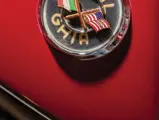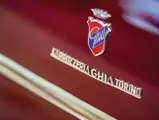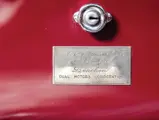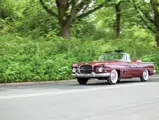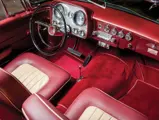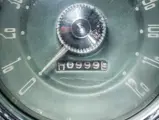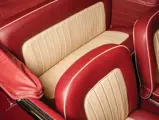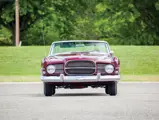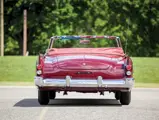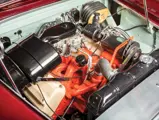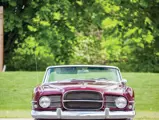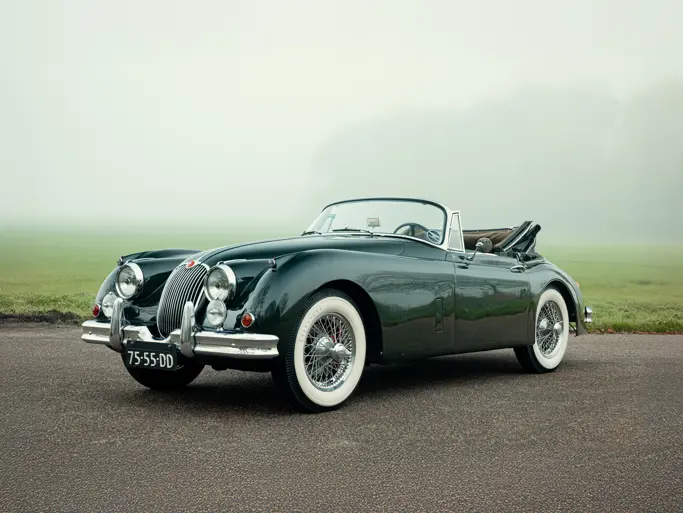230 hp, 315 cu. in. Dodge D-500 “Red Ram” V-8 engine, Carter four-barrel carburetor, Chrysler Powerflite two-speed automatic transmission, independent front suspension with unequal length A-arms and coil springs, live rear axle and semi-elliptic leaf springs, and four-wheel hydraulic drum brakes. Wheelbase: 115 in.
When Chrysler opted out of putting its striking Dodge Firearrow show cars into production, Detroit trucking magnate Eugene Casaroll purchased the rights to the design. By 1957, his Dual Motors, named for the twin-engine trucks that the factory once produced, had a modified version of the Firearrow in production. It was known as the Dual-Ghia, and it featured an unbeatable combination of reliable Motor City-bred Dodge V-8 power and gorgeous hand-beaten bodywork by noted Italian carrozzeria Ghia, of Turin. Exhaustive attention to detail and extensive handcraftsmanship resulted in a beautifully finished automobile that had a luxurious interior, which featured such sporty notions as front bucket seats and a dashboard with a full set of instruments, set against engine-turned aluminum.
Casaroll’s genius was in recognizing the value of social status and upper-class appeal. Long before the Ferrari factory studied how many of a car they could sell and then built one fewer to ensure demand, the father of the Dual-Ghia personally hand-chose his customers from a list of clamoring applicants. Frank Sinatra, at the time the brightest of all stars, was a natural choice, as were his friends Peter Lawford and Eddie Fisher. Writing in their seminal Dual-Ghia history, published in Automobile Quarterly, John Martens and Dr. Paul Sable recounted when a would-be buyer in Brooklyn was refused a car on the grounds that one had already been delivered there. He then offered to move to Connecticut, only to be told that one had already been sent to the Constitution State as well.
It was this one-upmanship that led legendary Hollywood columnist Dorothy Kilgallen to wisecrack that a Rolls-Royce was the “status symbol for those who can’t get a Ghia.” Presumably, there were a lot of Rolls-Royces delivered in the late 1950s, but only about 100 Dual-Ghias were made between 1956 and 1958. With the exception of a duo of prototype coupes, all were convertibles.
DUAL-GHIA NUMBER 195
Chassis number 195 is a very late-production example that was produced approximately three cars prior to the end of first-generation Dual-Ghia production. It is one car of about half of the 100-car production run built with the Dodge Red Ram V-8, which was a desirable 230-brake horsepower “Hemi” design that was considered to be the most sought after of the engines offered by enthusiasts.
As is documented by its original sales receipt and title, copies of which will accompany the car, the Dual-Ghia was delivered by Sanders Motors Incorporated, a Cadillac dealer in Port Washington, New York, on April 18, 1958, at a cost of $7,300. The buyer was Lyman Kenyon Loomis, who was involved with numerous manufacturing associations, including consulting with manufacturers of shoelaces and adhesives. Remarkably, his trade-in on the luxe new convertible was a 1955 Ford, for which he received a $1,000 credit!
Mr. Loomis enjoyed his new toy for three years at his home on Sasco Creek Road in the exclusive enclave of Greens Farms, Connecticut. In 1961, he sold the car to the present owner, who would drive it and also maintain it carefully for many years. The consignor, who eventually became a well-known East Coast collector, would own and sell several other Dual-Ghias over the years, but chassis number 195 has always remained, until now.
The “driver” was recently submitted for a complete restoration, which was performed by the Dual-Ghia experts at the Kanter Brothers’ facility in New Jersey. As the owner reports, the car remained in very original, solid condition, and it needed only to be taken apart, repainted, its bright metal rechromed, and the “Hemi” rebuilt before it was put back together again. The body was refinished in a rich maroon, and the car features a complementary maroon and cream leather interior and a maroon cloth top. Chrome wire wheels were installed, and the entire car was thoroughly detailed to “as-new” condition.
Surely the next best thing to buying a Dual-Ghia from its original owner would be to buy one from its caretaker of the last half century! This is that rare opportunity, and coupled with a fresh, accurate restoration that has yet to be shown, the sale of this two-owner luxury car is as exclusive an opportunity as it was in 1958.
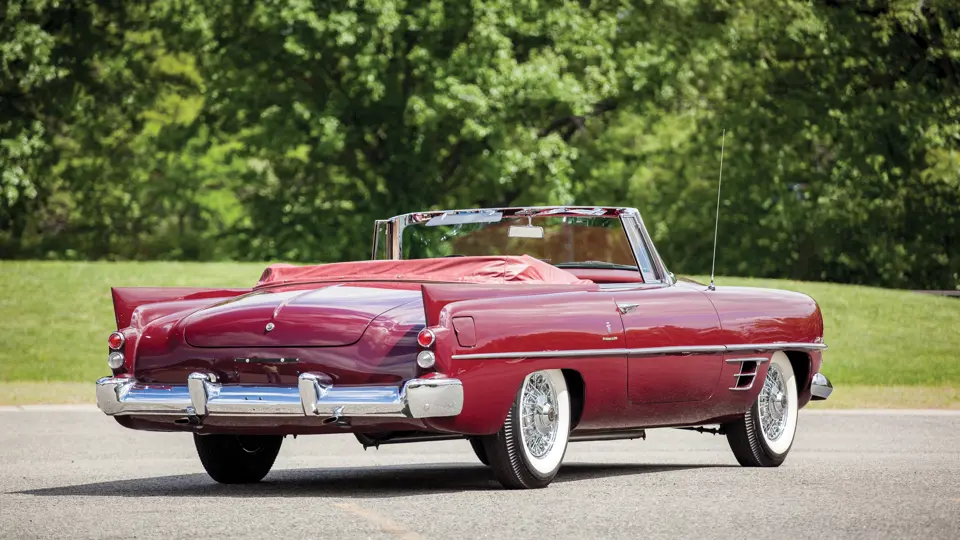




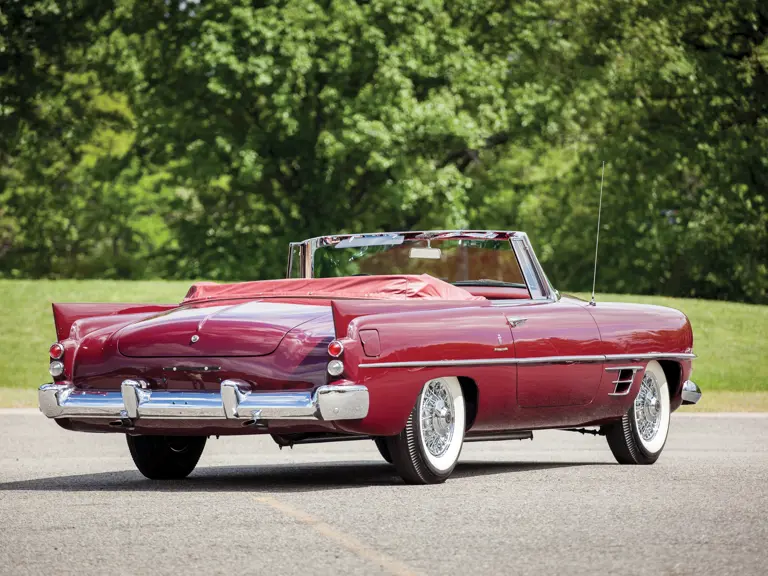



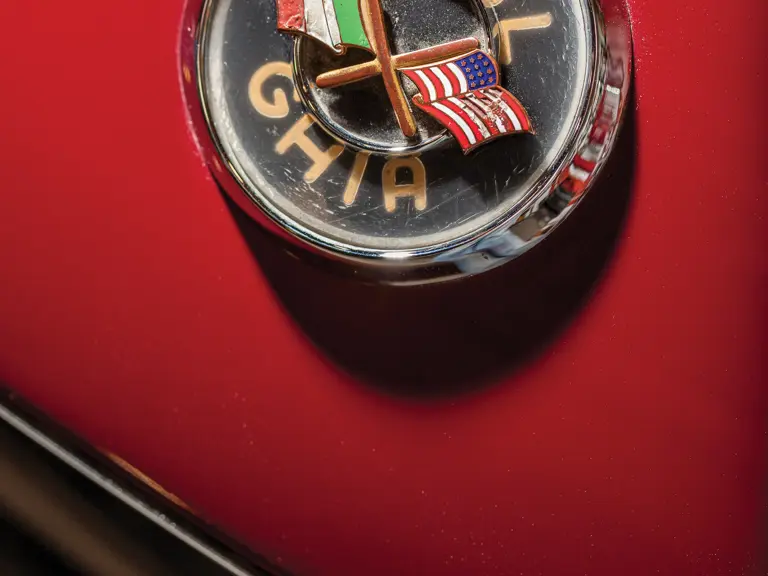
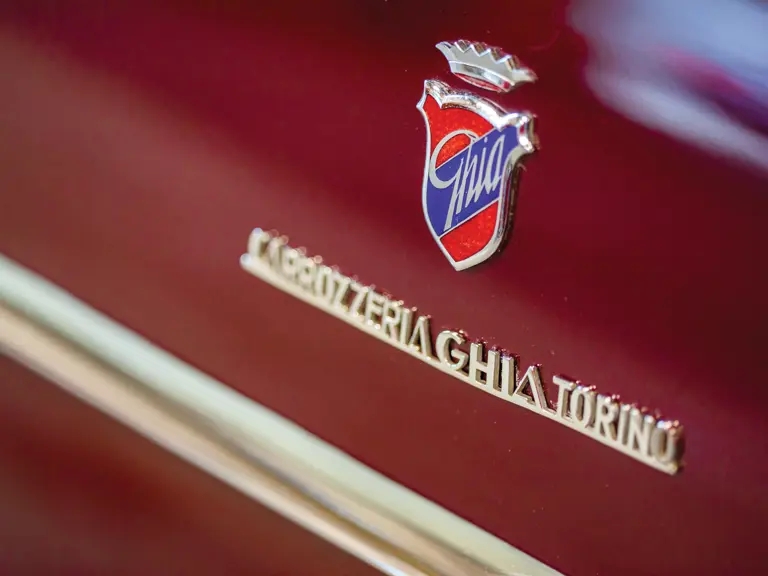
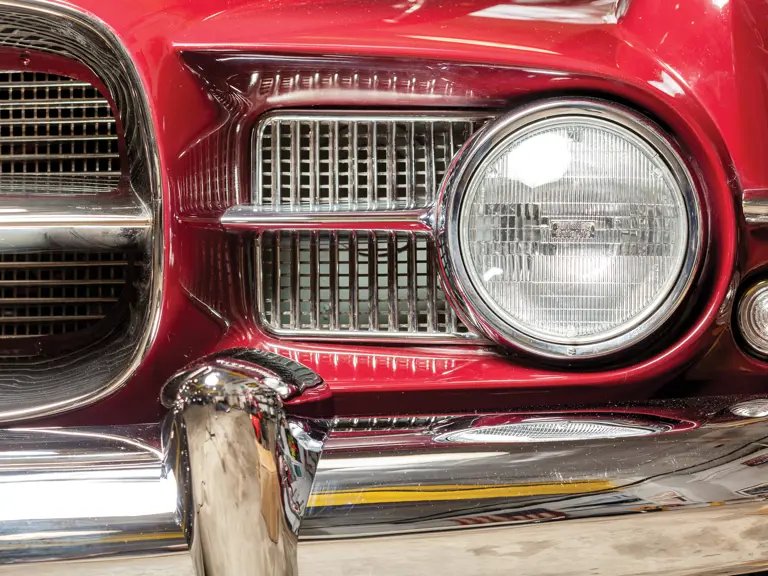
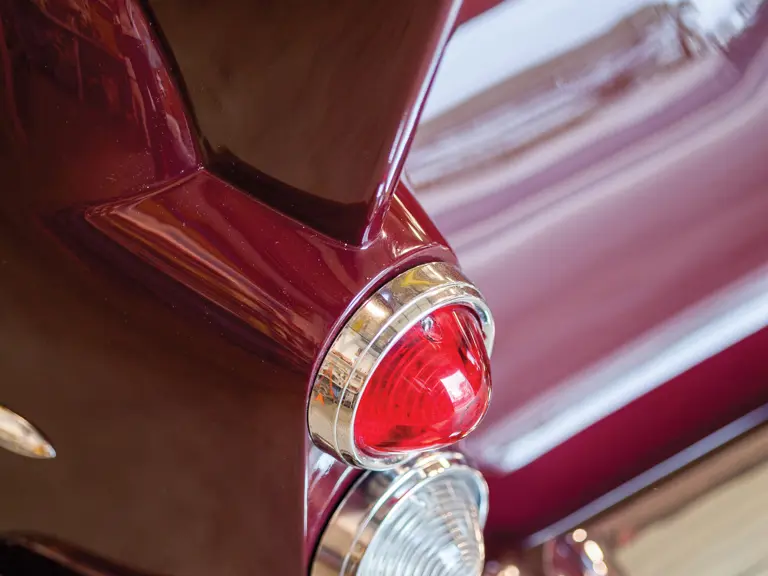
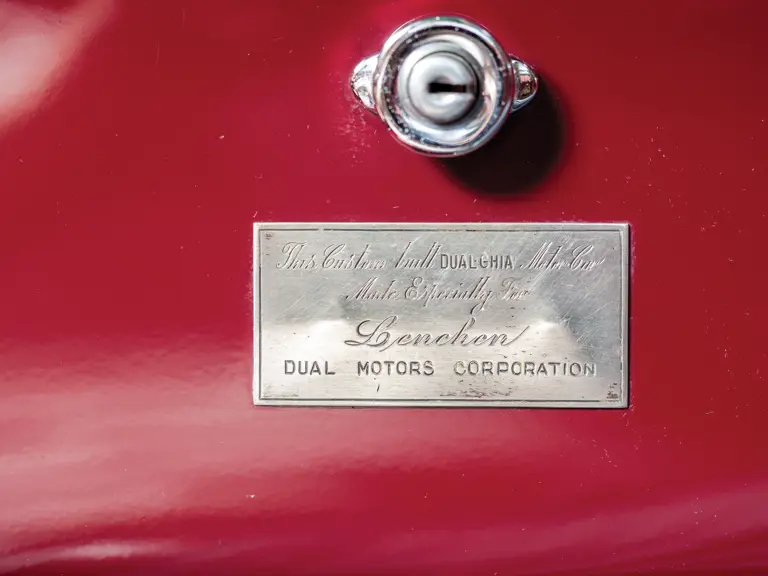
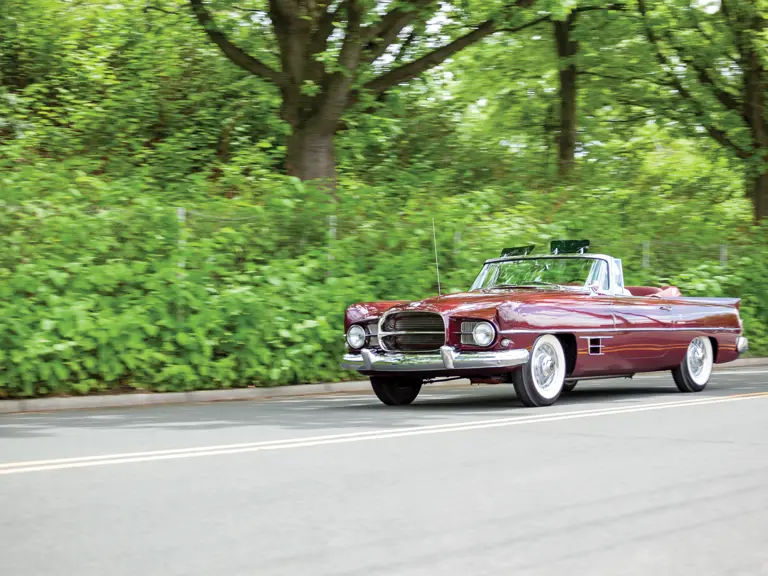

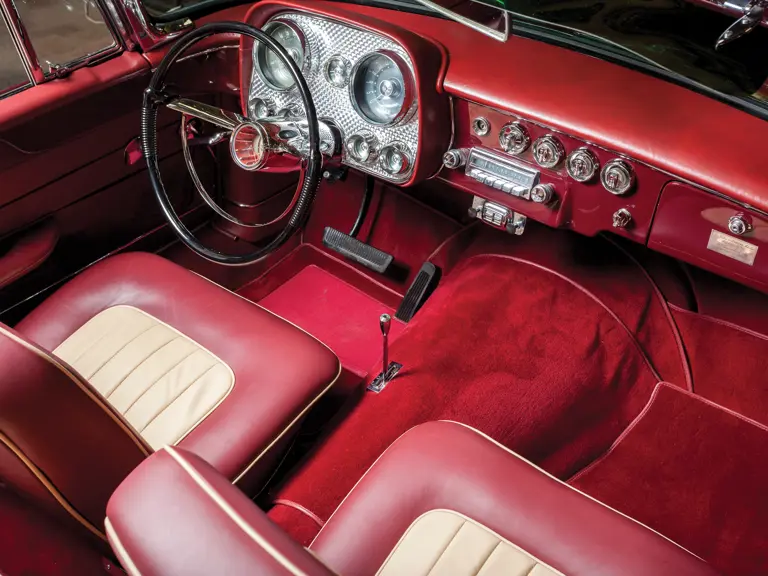
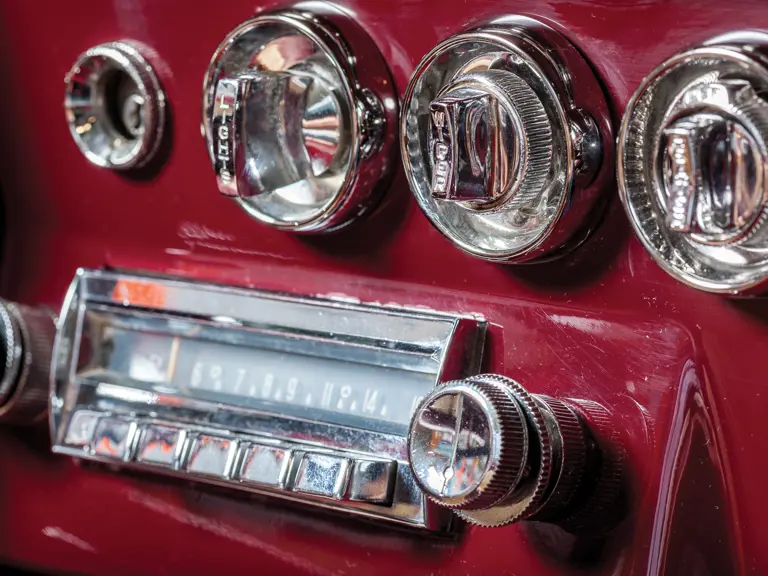
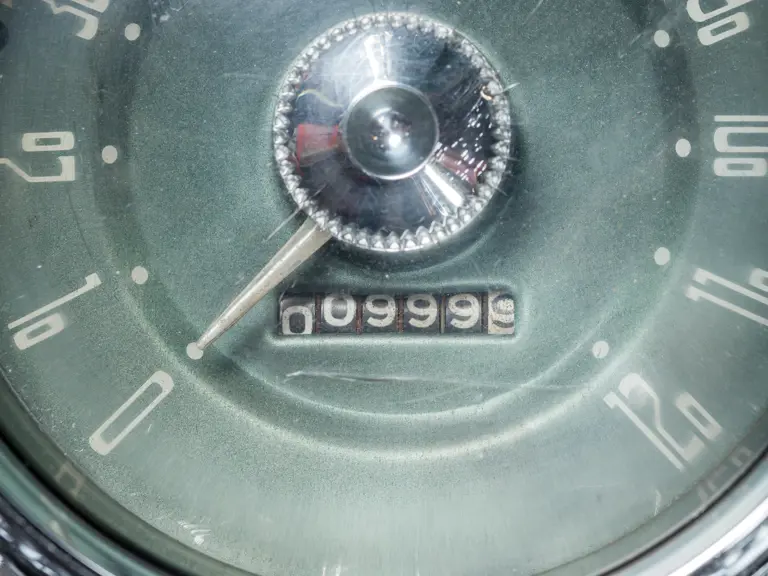
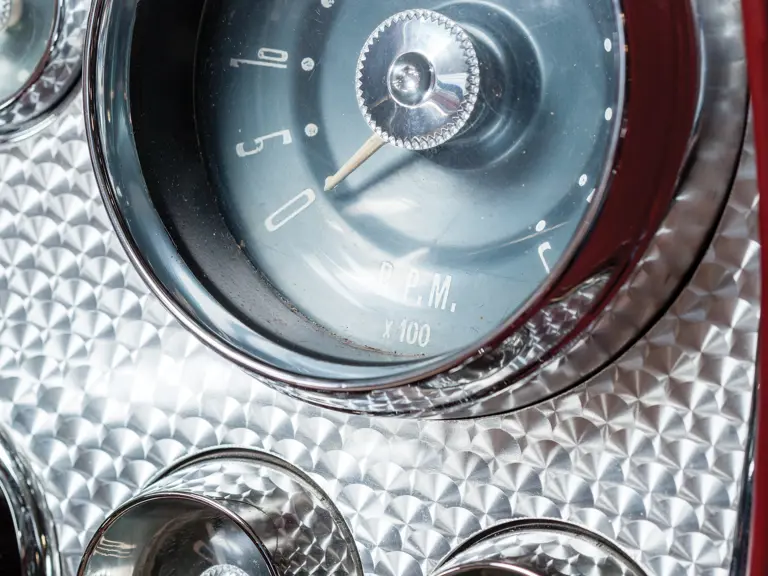
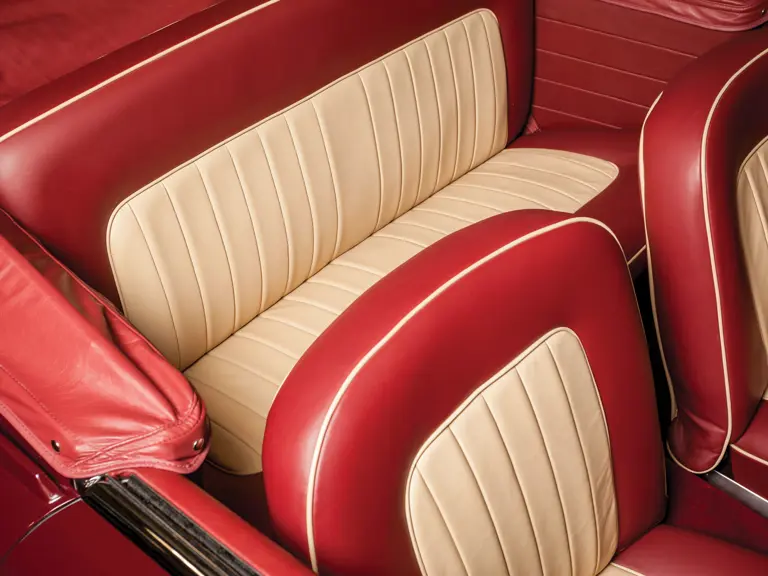
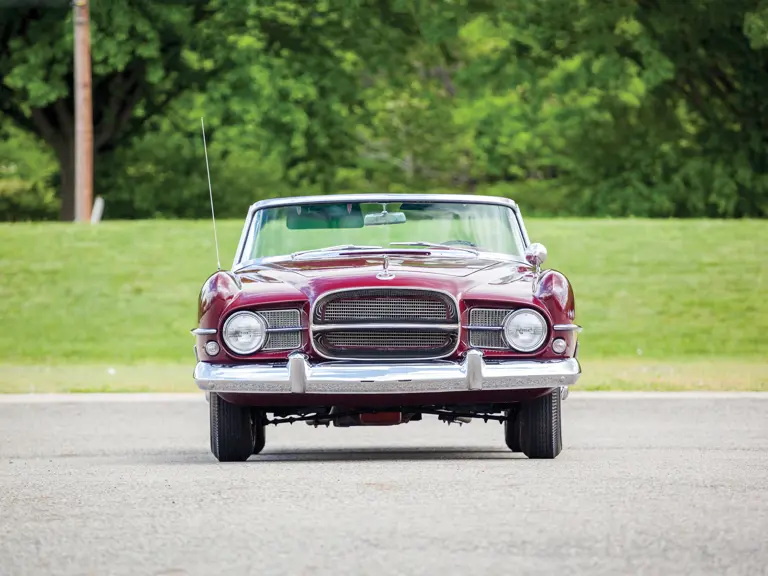
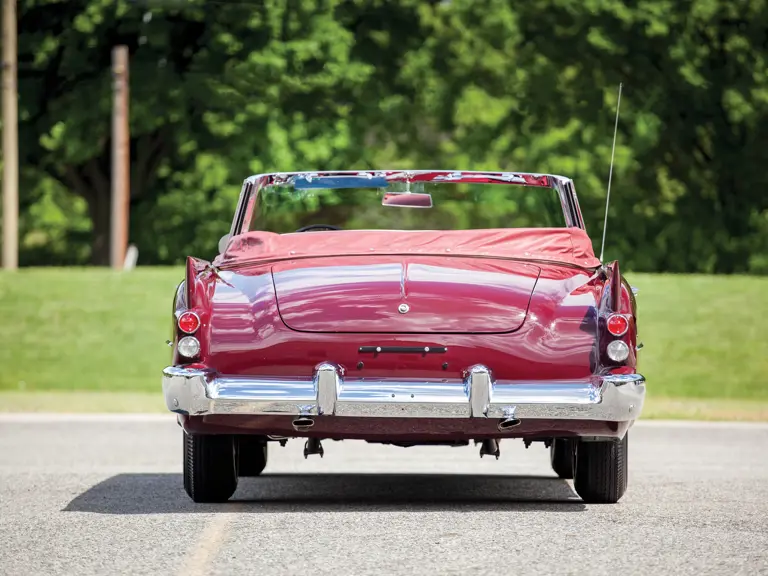
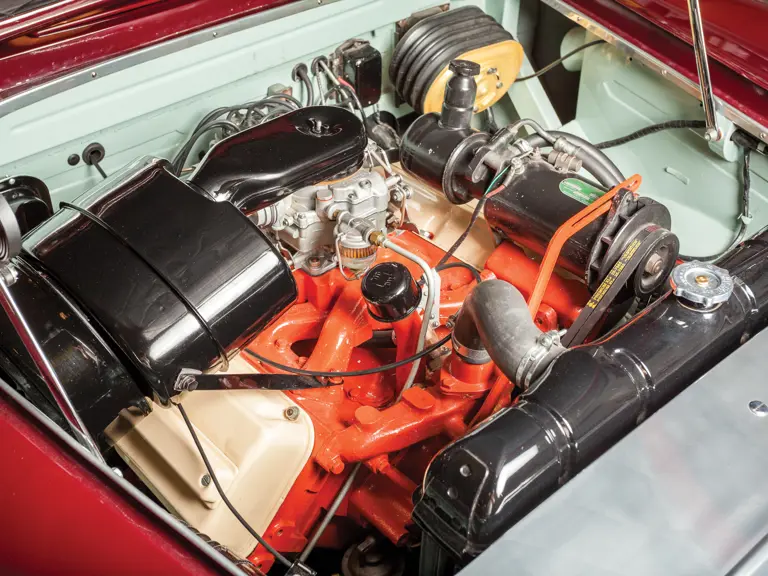
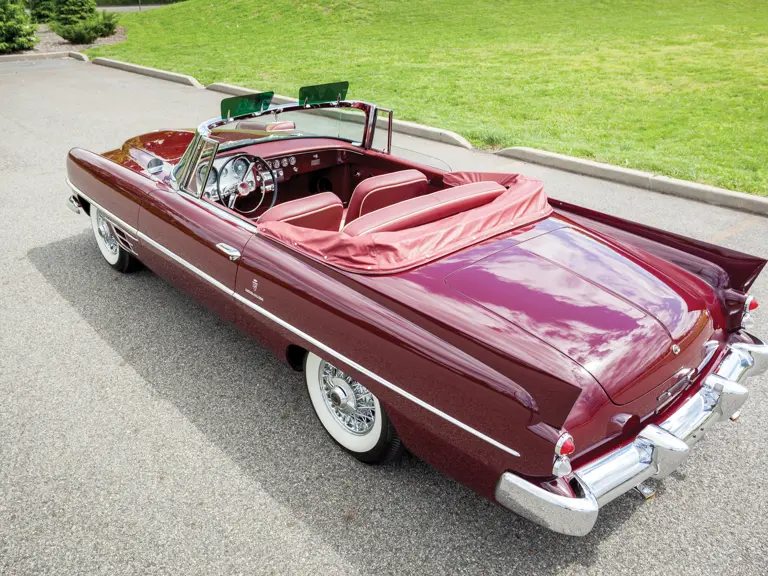
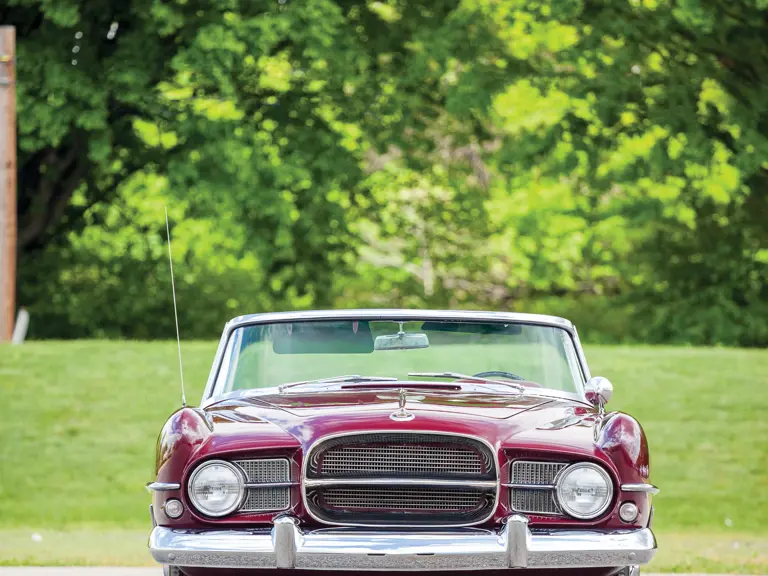
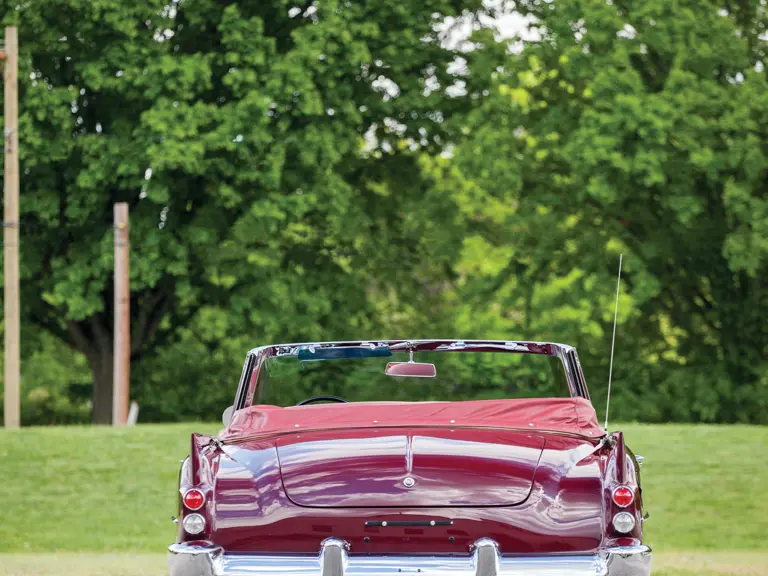
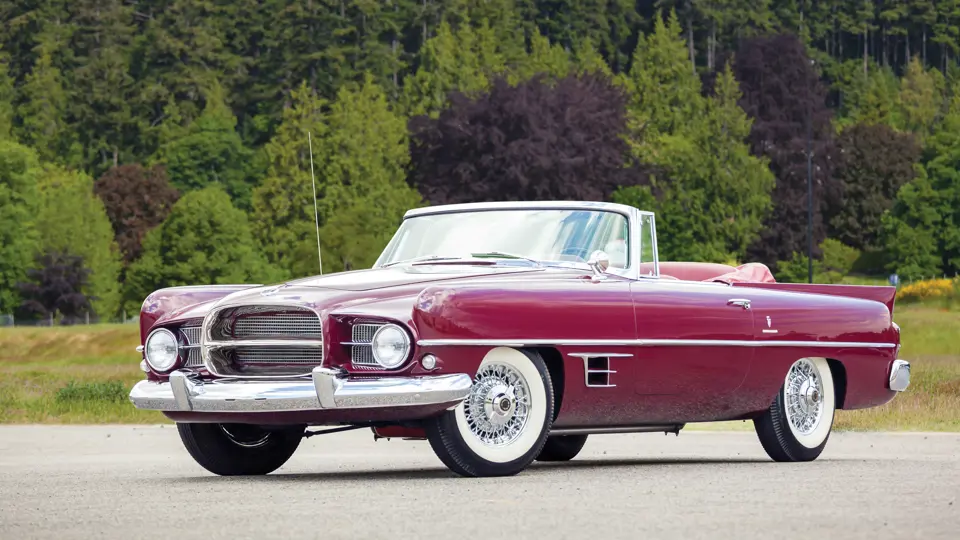
 | Monterey, California
| Monterey, California




